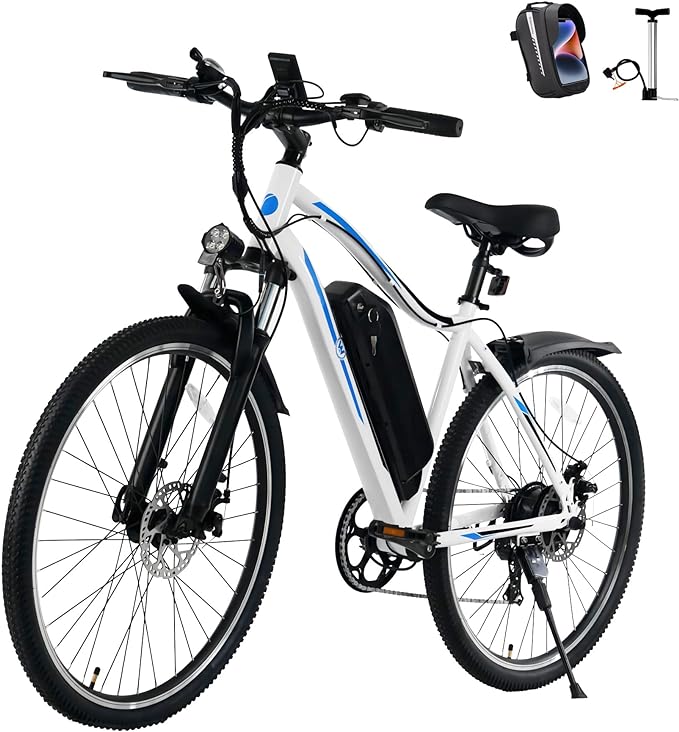This guide will help you navigate the essential aspects of charging electric bikes while ensuring both safety and convenience. Whether you're a seasoned rider or new to the world of electric bicycles, understanding how to charge your bike properly is crucial for maintaining its performance and longevity.
We'll cover everything from choosing the right charger to best practices for safe charging, so you can enjoy your rides with peace of mind. Let's dive in!
As environmental awareness grows, more people are choosing electric bikes as their primary mode of transportation. These bikes not only help reduce carbon emissions but also save owners on commuting costs, becoming an integral part of modern urban life. However, with the rise in popularity of Electric Bike with pedal-assist mode, concerns about how to charge them safely and effectively have come to the forefront. In some cities, like New York, upscale apartments have even imposed restrictions on the entry of Electric Bike with pedal-assist mode due to safety concerns regarding their batteries. This has left many owners grappling with charging challenges. Fortunately, by following the right practices, your TAURUS electric bicycle can remain safe and reliable.
Electric bicycle batteries, particularly lithium batteries, are favored for their high energy density and long lifespan. To some extent, the performance and user experience of an electric bicycle are closely tied to the quality of its battery. Therefore, understanding the characteristics of electric bicycle batteries is crucial. While lithium batteries have clear advantages, they also have specific requirements regarding temperature and charging methods. If the environment or charging technique is not carefully managed, it can lead to overheating, accelerated aging, or even dangerous situations.
When choosing a charging environment, indoors is the best option, especially during the cold winter months when indoor temperatures are relatively stable, effectively mitigating the effects of low temperatures on the battery. In hot summer months, try to find a shaded area, such as an outdoor canopy, to ensure good airflow during charging and prevent the battery from overheating. Remember, maintaining proper ventilation while charging not only extends the battery's lifespan but also helps avoid potential safety hazards.
Using the correct charger is another key factor in ensuring safe and efficient charging. Many owners might opt for a different brand or model of charger for convenience, but this can lead to battery damage or even serious incidents like fires. Original chargers are specifically designed to match the battery perfectly, providing the optimal charging current and voltage, ensuring that the battery is not harmed during the charging process. Thus, selecting the right charger is not just a matter of responsibility towards your electric bicycle; it’s also a matter of personal safety.
Timing your charging is equally important. Many owners wait until their battery is completely drained before charging, a practice that can actually accelerate battery aging. To prolong battery life, it’s recommended to start charging when the battery level drops to around 20%-30%. Additionally, unplugging the charger promptly after the battery is fully charged is a good habit to adopt, as it prevents overheating or damage from prolonged charging. Imagine riding your electric bicycle through the city streets, enjoying the breeze, only to have the battery fail due to overheating—it's a feeling of losing control that’s best avoided.
During the charging process, owners should keep a close eye on the battery's condition. Check for any signs of swelling, leakage, or other abnormalities. If any issues are detected, stop using the battery immediately and consult a professional for inspection. Moreover, try to avoid frequently plugging and unplugging the charger during charging, as this can affect charging efficiency and even damage the battery. Picture this: you’re charging your electric bicycle, and suddenly the power plug becomes loose, interrupting the charging process and forcing you to start over—what a waste of time!
Regular maintenance is also essential for ensuring the long-term use of your electric bicycle. Owners should routinely check the connections of the battery and charger to ensure there is no wear or damage. Additionally, regularly cleaning the contact points of the battery and charger helps maintain a good electrical connection. Imagine riding along and suddenly discovering the battery is dead, only to find out it was due to a poor connection—such a frustrating situation!
Charging safety is a critical aspect that owners cannot afford to overlook. When charging, ensure that both the battery and charger are used in a dry environment to prevent short circuits due to moisture. Also, keep the charger and battery out of reach of children to avoid accidents. While the charging process for Electric Bike with pedal-assist mode is not complicated, the details are crucial. Therefore, owners must remain vigilant to ensure that every aspect of charging adheres to safety standards.
In certain situations, such as when apartments prohibit Electric Bike with pedal-assist mode, owners might consider removing the battery and charging it in an outdoor outlet. While this method is simple and effective, it’s essential to ensure the battery is placed in a secure location to prevent theft or damage. Additionally, make sure the charging area is well-ventilated to minimize safety risks. Although this solution is flexible, it requires careful implementation to prioritize safety.
By following these simple steps, electric bike owners can ensure that their batteries are charged safely and efficiently. This not only helps to extend the battery's lifespan but also guarantees safety on every ride. As an eco-friendly mode of transportation, electric bikes deserve our collective promotion and use. Establishing proper charging habits is essential for your safety and that of your electric bike. Let’s work together to advocate for the safe use of electric bikes, adding a touch of green and convenience to our lives.
In our daily lives, we often overlook small details; however, it is these very details that determine the quality of our lives. While charging an electric bike may seem straightforward, it carries numerous safety risks and practical tips. As electric bike owners, understanding this knowledge is not only a responsibility to ourselves but also a sign of respect for the safety of others. Every ride is an exploration of life, and safe charging is the cornerstone of our journey. I hope every owner can enjoy the thrill of riding while ensuring safe charging, making electric bikes an indispensable companion for green travel in our lives.



Leave a comment
This site is protected by hCaptcha and the hCaptcha Privacy Policy and Terms of Service apply.